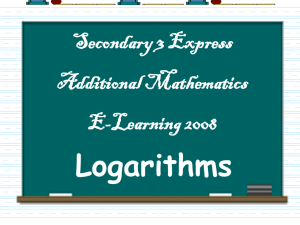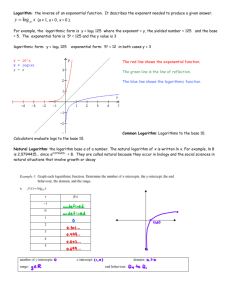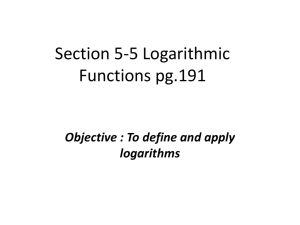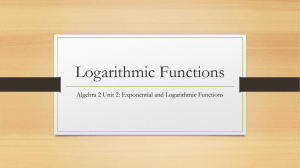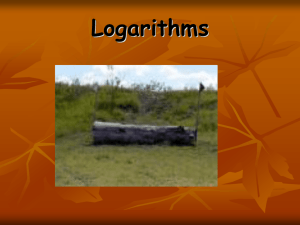Section 3.3
advertisement
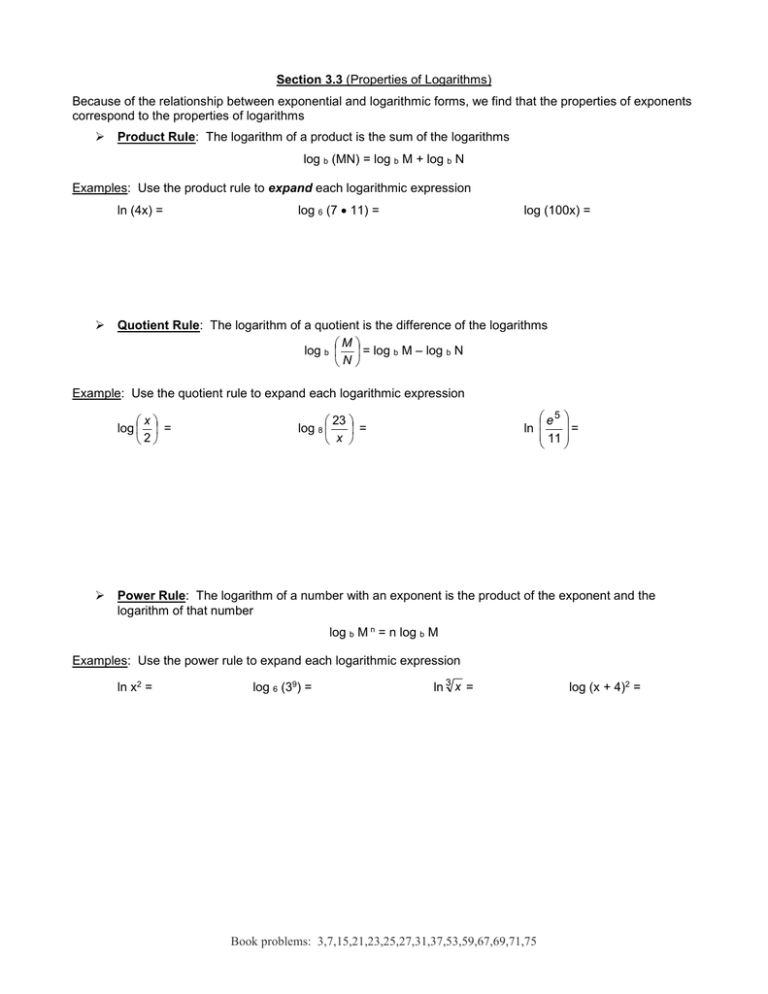
Section 3.3 (Properties of Logarithms) Because of the relationship between exponential and logarithmic forms, we find that the properties of exponents correspond to the properties of logarithms Product Rule: The logarithm of a product is the sum of the logarithms log b (MN) = log b M + log b N Examples: Use the product rule to expand each logarithmic expression ln (4x) = log 6 (7 11) = log (100x) = Quotient Rule: The logarithm of a quotient is the difference of the logarithms M log b = log b M – log b N N Example: Use the quotient rule to expand each logarithmic expression x log = 2 e5 = ln 11 23 log 8 = x Power Rule: The logarithm of a number with an exponent is the product of the exponent and the logarithm of that number log b M n = n log b M Examples: Use the power rule to expand each logarithmic expression ln x2 = log 6 (39) = ln 3 x = Book problems: 3,7,15,21,23,25,27,31,37,53,59,67,69,71,75 log (x + 4)2 = You can use more than one of these properties in combination to expand logarithmic expressions Examples: Use the logarithmic properties to expand each logarithmic expression as much as possible log b (x4 3 x log 5 25y 3 y )= = Thinking of these properties in reverse allows us to condense logarithmic expressions Examples: Write the following as a single logarithm log 4 2 + log 4 32 log (7x + 6) – log x 2 log (x – 3) – log x 2 ln x + 1 ln (x + 5) 3 We can use the change-of-base property to find logarithms in other bases (besides 10 and e) Change-of-base Property: The logarithm of M with base b is equal to the logarithm of M with any base divided by the logarithm of b with that same new base log b M log a M log a b (note that log b M log M ln M ) log b ln b Example: Use common logarithms (base 10) to evaluate log 7 2506 Example: Use natural logarithms to evaluate log 7 2506 Book problems: 3,7,15,21,23,25,27,31,37,53,59,67,69,71,75


